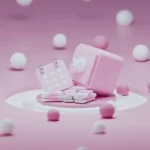Skin is one of the most important parts of our body that defines our identity. But, there are many different skin concerns including dermatological disorders, skin cancer, and aging. For those who have been searching for a natural but effective way to help their skin, you’ll be happy to learn that microcurrent treatment can provide some relief!
What is Microcurrent Skin Treatment?
Microcurrent skin treatment is a form of non-invasive therapy that uses a low-frequency current to stimulate the skin. This causes the release of endorphins, which are natural painkillers, and stimulates the production of new skin cells. Microcurrent therapy is used to treat a variety of conditions, including varicose veins, spider veins, and cellulite.\nMicrocurrent treatment is relatively new and has only been in use for about 50 years. It is not FDA-approved, but it is generally considered to be safe and effective. There are some potential side effects associated with microcurrent treatment, but they are generally mild and temporary.\nIf you are interested in using microcurrent therapy to treat your condition, please speak with your doctor first.
How Does Microcurrent Skin Treatment Work?
Microcurrent skin treatment is a type of therapy that uses low-intensity electrical currents to improve the function and appearance of skin. The currents cause tiny drops in blood flow, which can stimulate the growth of new skin cells and help reduce the appearance of wrinkles and scars.
Microcurrent treatments are usually administered in a series of three to five sessions over a period of several weeks. Results may vary from person to person, but most people find that microcurrent skin treatment is relaxing and leaves their skin feeling smoother and more elastic.
Benefits Of Microcurrent Skin Treatment
Microcurrent skin treatment is a newer and more sophisticated form of skincare that uses low-level electrical currents to stimulate the skin. Microcurrent stimulation has been shown to be effective in treating a variety of skin conditions, including sun damage, acne, rosacea, and psoriasis.
Microcurrent treatment is also well-known for its anti-aging properties. By stimulating the production of new collagen and elastin in the skin, microcurrent treatment can help reduce the appearance of wrinkles and age spots. Additionally, microcurrent stimulation can improve circulation in the skin, which can help reduce the appearance of cellulite.
So what are the benefits of microcurrent skin treatment? Microcurrent stimulation is a safe and effective way to treat a wide range of skin conditions. Plus, it has many anti-aging benefits. If you’re looking for a new way to treat your skin, microcurrent treatment may be a good option for you.
How To Use Microcurrent Skin Treatment
Microcurrent skin treatment is a newer form of skincare that uses small electrical currents to improve the appearance and function of the skin. Microcurrent Skin treatment is often used to treat scars, wrinkles, age spots, and other skin conditions.
Microcurrent Skin treatment is administered by a dermatologist or other healthcare professional using a device that sends microcurrents through the skin. These microcurrents cause tiny tears in the skin that help improve circulation and promote healing.
Some benefits of microcurrent skin treatment include:
-Improved appearance and function of the skin
-Reduced scarring
-Reduced wrinkles
-Reduced age spots
Cost of a Microcurrent Session
Microcurrent skin treatment is a relatively new and growing form of medical therapy that uses low-power electrical currents to improve the appearance, feel, and function of the skin. Microcurrent therapy is most commonly used to treat various skin conditions such as wrinkles, stretch marks, cellulite, and psoriasis.









Can you be more specific about the content of your article? After reading it, I still have some doubts. Hope you can help me.
I don’t think the title of your article matches the content lol. Just kidding, mainly because I had some doubts after reading the article.
I don’t think the title of your article matches the content lol. Just kidding, mainly because I had some doubts after reading the article.